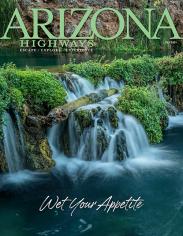Jacob Lake Inn
Maybe you’ve spent a night or two in one of the cabins, or maybe you’ve stopped in for a dozen cookies or a jägerschnitzel dinner. But if you’ve so much as visited the North Rim of the Grand Canyon, you know about Jacob Lake Inn, which marks a century in business this year. And while its location at the top of the North Rim Parkway (State Route 67) has been key to that longevity, so has the determination of the family running the place.
